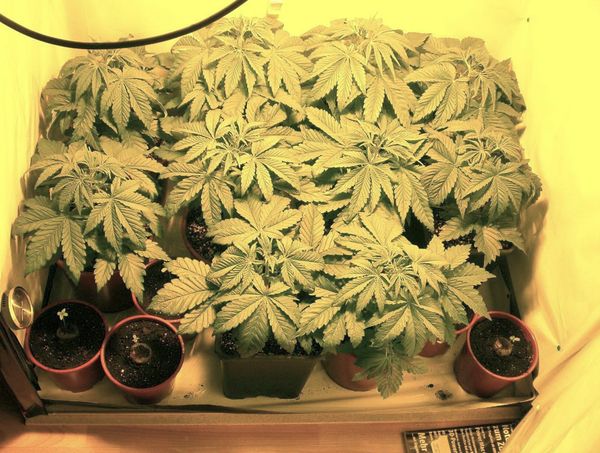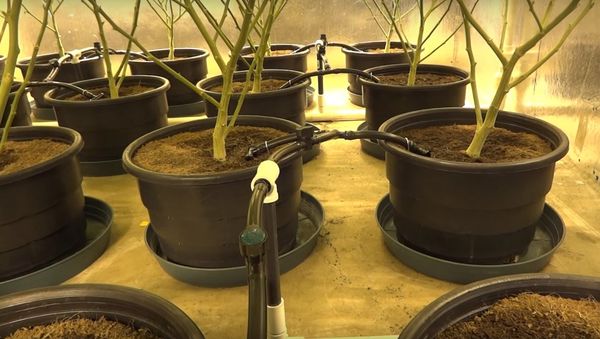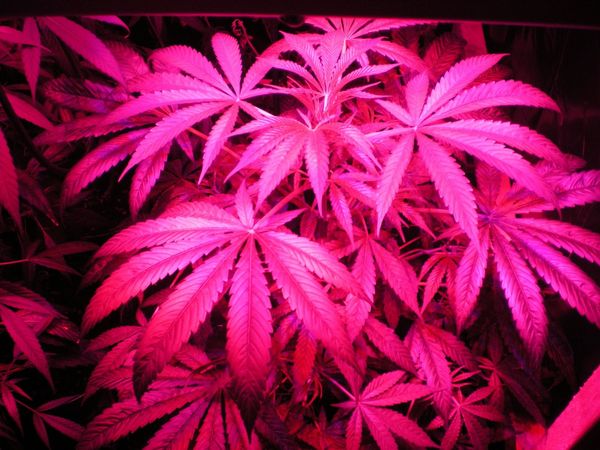- If you are thinking about planting marijuana indoors for the first time, before starting out you will need to make a series of decisions that will involve opting between one kind of growing and another.
- First off, you will need to choose the type of substrate you are going to use, and whether to add fertiliser or opt for a composite of mineral salts that replicates the texture of soil – an alternative that will avert many problems right from the outset.
- We will guide you so that you can choose the best options, such as the type of irrigation, lighting, and the food you will give your plants, so that they grow in a fast and easy way.

Growing cannabis can be just as easy as cultivating other types of plants. As with other crops, it is best is follow some simple routines and guidelines so that your plants flourish, even if they are indoors.
One of the simplest and safest methods is that based on a mineral solution rather than using soil and agricultural fertilisers. Even in nature there are plants that grow in areas without soil, and, even though we are operating between four walls, it is easy to mimic this process. On the market you can find easy-to-use products: there is peat and Sphagnum moss bases created specifically for indoor gardens. The plants adapt to these artificial substances as if they were real earth.
Growing marijuana using soil and fertilisers entails certain hazards that can be avoided with these mineral solutions. Garden soil tends to be heavy and can start to compact after several waterings. This pressure is harmful to tender roots. In addition, depending on its origin, it can generate spores, bacteria and weed seeds. In contrast, most soilless mixes come from the compression and treatment of dead plants. Their main advantage is how gentle they are on roots, which sometimes can be damaged when they receive too many nutrients. The mixture imitates the texture of the soil and usually comes with ingredients that favour the retention of humidity from the air.
One can also buy solutions of substrates with small amounts of basic nutrients to help young plants grow. These include chips of wood or vermiculite, a mineral with absorbent properties. In general these types of mixtures provide a substrate that is very appropriate and helps to minimise the errors that novice beginners commit, and are perfect for small indoor crops.
What system of irrigation should I choose?
When growing plants using a mineral solution substrate base, you can water by hand or install an irrigation system. If the garden is small, the simplest thing is to do it manually. As these are not very large spaces, it is worth dedicating a little time to this task and taking advantage to check out how the plants are coming along. Through this process we can discover important changes that may indicate, for example, that there is a lack of minerals, or a pest problem.

If your space for growing is very narrow, hampering movement, an automatic and programmable system is the solution. The simplest kinds are those in which tubes are placed over the pots to irrigate each plant. The water is obtained from a source close to the garden, or right in the room; and the tube distributes the liquid to each receptacle in a uniform way. It is very simple to use and easy to connect to drip or sprinkler systems. The sprinkler has the advantage of distributing the water evenly and being less likely to produce puddles, and with the drip system the absorption rate is lower.
A common question is how often you need to water. Most growers observe a three-day schedule. On the first day they add to the water a solution of nutrients, and water for a few minutes. On the second, they empty the receptacle to add fresh, distilled water, i.e., without impurities. Finally, you don't have to do anything but give your plants a rest. This rotation system ensures that the roots absorb the nutrients properly, and puddles do not form. The final frequency, however, will depend on the particular light and humidity conditions of each crop.
How much fertiliser should I use?
The amount of nutrients that you give your plants is very important. Both a lack or glut of nutrients can damage their roots and affect their growth, and in the most extreme cases they can die. There are visual changes indicating problems you need to pay attention to: if there is a lack of nourishment the leaves can become harder and their coloration can change, while the whole plant may exhibit physical deformities, or wither.
When there is excessive fertilisation the early symptoms are misleading, because it looks like the plant is actually undernourished. This happens because the salts accumulate and keep the roots from properly absorbing the nutrients, preventing their distribution to the rest of the plant. But using more fertiliser will only aggravate the situation.
Overfeeding plants is a common mistake, and it is then harder to solve the problem of excess as opposed to insufficient fertilisation, which only requires increasing the dose of nutrients given the plant. To restore balance to the level of minerals and components it may be necessary to wash the roots. Thus, many growers opt for a more minimalist approach to nourishment. If you are a beginner, this way of growing is the most appropriate. Still, you will always need to strive to strike a delicate balance between too much and too little.
Which lamps should I use?
Once you have decided how you are going to feed and water your marijuana plants it is time to choose what kind of lighting you want to install. Today there are many options, some of which are very expensive. However, even with a modest budget you can obtain good results, and without too many headaches.

The best option is to buy HID (High Intensity Discharge) lamps. Among the different types of these available Halide Metal (HM) models are recommended during the growth stage, and HPS (High Pressure Sodium) during the flowering phase. If you intend to start out with just a few plants, it is best to invest in HPS lamps, which emit great amounts of red and orange light waves that provide plants with more energy with which to perform photosynthesis. Another option is to buy both types and change the bulbs depending on the stage of cultivation.
Fluorescent lamps are also cheap and radiate a spectrum of light suitable for crops. They are often used for young plants or those at rest.
In small closets the marijuana plants will need a bulb of between 125 and 250 watts. This energy is enough to maintain enough heat without giving you an exorbitant energy bill. When dealing with a larger space, such as a small room, the bulbs must be from 400 to 600 watts. 1000-watt bulbs should be reserved for commercial operations, as they consume a lot of energy.
Also, ever since they hit the cannabis world LED lamps have developed into a very profitable, efficient and precise solution to obtain large crops indoors at lower costs, representing a technology that really shines on a market full of options. Thanks to them, marijuana growers have the opportunity to save money, water and energy, in addition to being environmentally responsible, all without having to give up high-quality crops.
When you are clear on these four aspects (substrate, nutrients, irrigation and lighting) you can begin to grow marijuana at home. The best approach is to take it easy and be patient. Although growing is not complicated, plants do require some attention if you want them to grow strong and for their buds to feature a good flavour and aroma.



Comments from our readers
There are no comments yet. Would you like to be the first?
Leave a comment!Did you like this post?
Your opinion about our seeds is very important to us and can help other users a lot (your email address won't be made public).